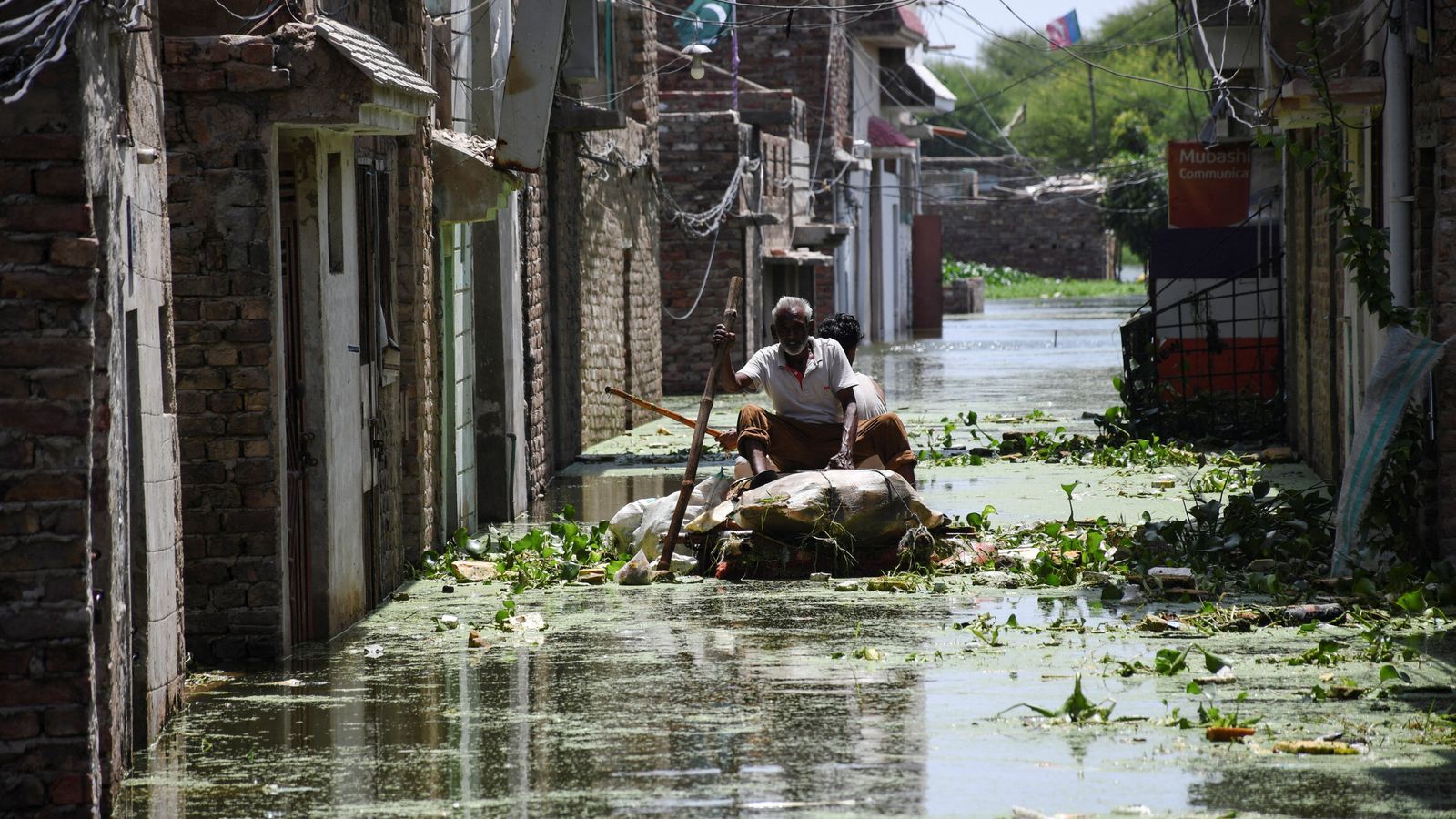Authorities in Pakistan are rushing to widen a breach in its biggest lake to keep the waters from overflowing, as an unprecedented monsoon season threatens a 4,500-year-old archaeological site.
Unprecedented floods have affected 33 million people and killed at least 1,325, including 466 children, national disaster officials have said.
Record-breaking rains have inflicted damage on Mohenjo-daro, a UNESCO World Heritage Site located in southern Sindh province near the Indus River.
The ruins are considered among the best preserved urban settlements in South Asia.
While flooding has not directly hit the ancient site, the downpour has damaged some outer walls and also some larger walls separating individual rooms or chambers.
“Several big walls, which were built nearly 5,000 years ago, have collapsed because of the monsoon rains,” the site’s curator, Ahsan Abbasi, told the Associated Press.
He said dozens of construction workers have started repair work under the supervision of archaeologists.
Pakistan floods leave people desperate and hungry with warning more is to come
Pakistan floods: £13.5m raised for disaster relief efforts
Pakistan floods: Men trek 20 miles from cut-off town to get food for their stranded families
The site’s landmark “Buddhist stupa,” a large hemispherical structure associated with worship, meditation and burial, remains intact.
Mr Abbasi said Mohenjo-daro’s civilisation built an elaborate drainage system which has been critical to its survival during previous floods.
The ruins were discovered in 1922 and mystery surrounds the disappearance of its civilisation, which coincided with Ancient Egypt and Mesopotamia.
Another lurking danger is the Manchar freshwater lake in the southern province of Sindh, which is dangerously close to bursting its banks and flooding the nearby city of Sehwan.
Authorities are battling to widen a breach in the lake to keep the waters from overflowing.
Around 100,000 people have already been displaced from their homes in the effort to stop the lake from overflowing – an outcome authorities fear could affect hundreds of thousands more.
“Till yesterday there was enormous pressure on the dykes of Johi and Mehar towns, but people are fighting it out by
strengthening the dykes,” said district official Murtaza Shah. He added that 80 to 90% of townspeople had already fled.
Rising waters have already turned the nearby town of Johi into a virtual island.
The Pakistani government and the United Nations have both blamed climate change for the deadly floods, which followed record-breaking summer heat.








